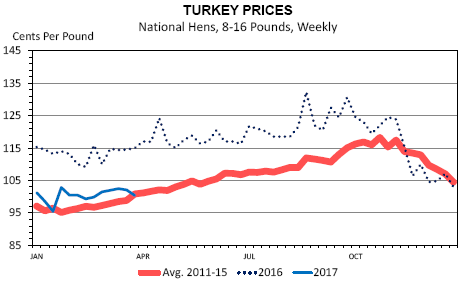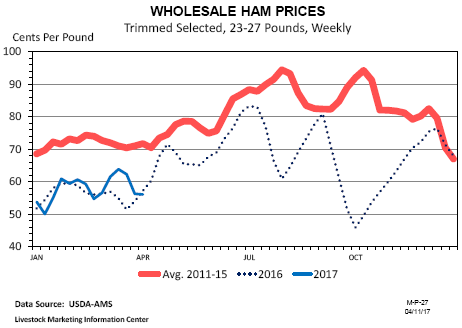



CME: Broiler Meat Production During Q1 Expected to Rise 2% Compared to Last Year
US - Total red meat and poultry supplies during the first three months are on track to down by less than 1 per cent from a year ago, reports Steiner Consulting Group, DLR Division, Inc.Actual data for January and February is in place, with weekly data for March giving a close approximation of quarterly results. The poultry component of meat supplies (the other major pieces of the total meat supply pie are beef and pork) was close to the same as a year ago. Per capita meat disappearance for the quarter is currently pegged at 52.7 pounds per person (retail weight), which compares to 52.9 pounds in the first quarter of 2016. The slight decline is due to less beef and pork and has been detailed in this report during the last two days.
Broiler meat production during the January-March quarter will be up close to 2 per cent from a year ago. Most of the increase will come from an increase in birds processed. The average weight of birds at time of processing will be close unchanged from a year ago, which is atypical for this industry in recent years. In the winters of 2015 and 2016, average bird weight increased from the prior year by about 1.5 per cent.
In absolute terms, broiler production volume should be up close to 200 million pounds, year-over-year. Currently, the outlook for broiler exports for the quarter calls for a 170 million pound increase. Actual export data for January and February shows a 70 million pound increase for the year-to-date.
Turkey production is also slated to be up 2-3 per cent during the first quarter of 2017. Slaughter during the first two months of 2017 was up slightly less than 2 per cent. Average bird weights at time of processing in January were unchanged from the prior January, but February average bird weights were up 2 per cent. The increase in turkey production volume should be close to 40 million pounds compared to the first quarter of 2017. Turkey exports for the January-March quarter should be up 20 million pounds, offsetting half of the increase in production.

Turkey usage (a.k.a. disappearance in economics terms) during the winter quarter is being supplemented by less product going into cold storage. During the winter quarter of 2016, frozen inventories of turkey increased by 167 million pounds, of which 140 million pounds were moved into storage during January and February. This year, frozen turkey inventories increased by 99 million pounds and the quarterly increase is only expected to be 115 million pounds. The difference between 115 million pounds this year and 167 million pounds last year is an amount that supplements turkey moving into domestic meat marketing channels during the January-March quarter.
The turkey industry has used prices as a lever to increase usage, as whole bird prices reported by USDA-Agriculture Marketing Service during the first quarter averaged $1.01 a pound compared to $1.15 in the first quarter of 2016. Breast meat prices at the wholesale level averaged close to $1.60 per pound in the first quarter of 2017 versus $4.00 a pound a year earlier. Turkey pricing and usage trends could be a factor in the recent price weakness for hams that has been much more pronounced than normal.









